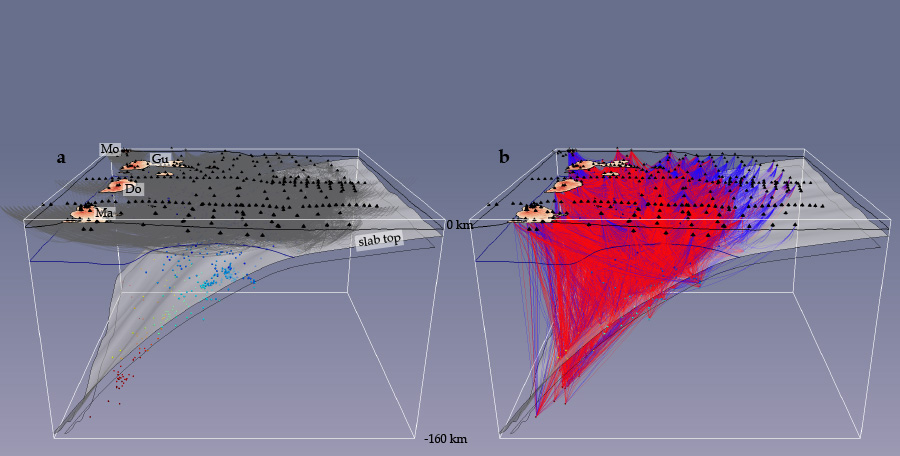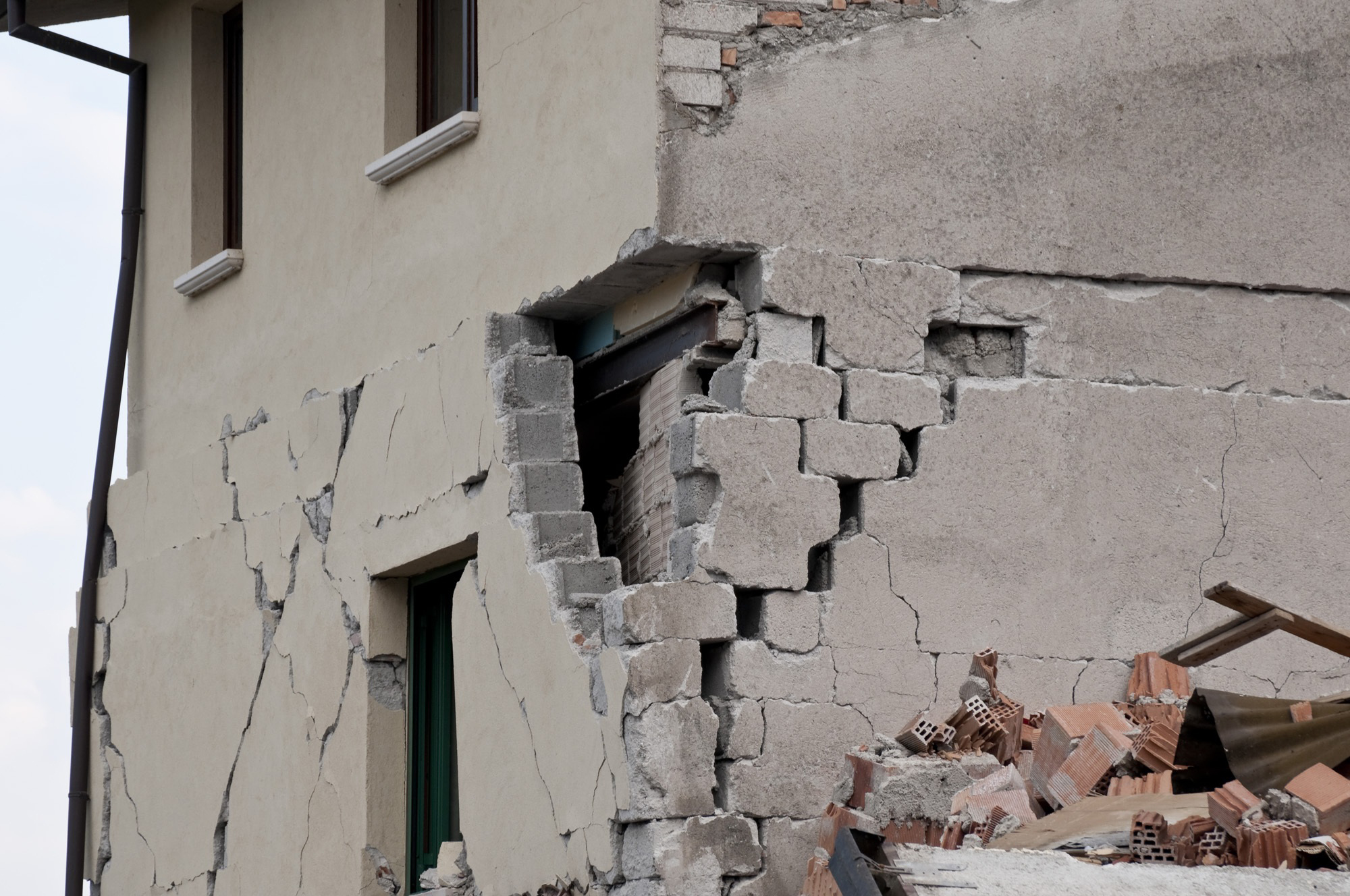Flagship Research Projects
{imageshow sl=23 sc=6 w=800 h=400 /}
OBSIVA - Virtual Seismological Observatory for the Lesser Antilles Subduction
- Details
 Subducting slabs carry water into the mantle and are a major gateway in the global geochemical water cycle. Fluid transport and release can be constrained with seismological data. Here we use joint active-source/local-earthquake seismic tomography to derive unprecedented constraints on multi-stage fluid release from subducting slow-spread oceanic lithosphere.
Subducting slabs carry water into the mantle and are a major gateway in the global geochemical water cycle. Fluid transport and release can be constrained with seismological data. Here we use joint active-source/local-earthquake seismic tomography to derive unprecedented constraints on multi-stage fluid release from subducting slow-spread oceanic lithosphere.
We image the low P-wave velocity crustal layer on the slab top and show that it disappears beneath 60–100 km depth, marking the depth of dehydration metamorphism and eclogitization. Clustering of seismicity at 120–160 km depth suggests that the slab’s mantle dehydrates beneath the volcanic arc, and may be the main source of fluids triggering arc magma generation. Lateral variations in seismic properties on the slab surface suggest that serpentinized peridotite exhumed in tectonized slow-spread crust near fracture zones may increase water transport to sub-arc depths.
This results in heterogeneous water release and directly impacts earthquakes generation and mantle wedge dynamics.
TO-EOS - The Tohoku-Oki Earthquake from Earth to Oceans and Space
- Details

A critical case-study to improve earthquake and tsunami anticipation
A fundamental question raised by the Tohoku-Oki earthquake is to know whether seismic rupture of giant earthquakes can be anticipated either in time (months, days or hours before the rupture), location and/or magnitude, and how, within 10 minutes after the quake, the amplitude of a tsunami can be estimated before it reaches the coast. Over the last decades, scientists have tried to address this question through different approaches, but mainly by (1) trying to isolate potential precursory signals or (2) improving our knowledge of the seismic cycle (how stress and strain balance over several earthquakes) to understand the physical parameters that control the size and location of those large earthquakes. More recently, a third more practical approach was developed called (3) early-warning which takes advantage of the slower propagation speed of seismic or tsunami waves compared to our communication networks to provide at least a few seconds or minutes to anticipate the approaching waves and gauge the threat they represent.
UMR Géoazur
Campus Azur du CNRS
250 rue Albert Einstein
- CS 10269 - F 06905 SOPHIA ANTIPOLIS Cedex
+33 (0)483 618 500




